Lockheed Martin and Fincantieri Marinette Marine have delivered the future USS St. Louis, Littoral Combat Ship 19, to the U.S. Navy.
“With LCS 19’s delivery, the U.S. Navy has 10 Freedom-variant Littoral Combat Ships in the fleet. LCS 7 recently deployed, and it is gratifying to know that our team has delivered a ship that is relevant for today’s fight and that is needed around the world,” said Joe DePietro, Lockheed Martin vice president and general manager, Small Combatants and Ship Systems.
“Our team is encouraged by the positive feedback we’ve received about LCS 7 on deployment, and we continuously look to incorporate fleet input into capabilities on LCS hulls.”
Today, say Lockheed, the Freedom-variant LCS delivers advanced capability in anti-submarine, surface and mine countermeasure missions.
“LCS was designed to evolve with the changing security environment. Today, as we see an increase in near-peer competition from large nation states, Lockheed Martin is partnering with the Navy to evolve LCS to meet these threats.”
Upgrades are already underway – their computing infrastructure is receiving cyber upgrades and naval strike missiles are being installed in support of upcoming deployments.
LCS 19 is the tenth Freedom-variant LCS designed, built and delivered by the Lockheed Martin-led industry team and will be commissioned in Pensacola, Florida, this summer.
“Fincantieri Marinette Marine’s shipbuilders are proud to deliver these proven warships, and we are honored to continue working with our partner Lockheed Martin and our customer, the U.S. Navy, to give them the capabilities to keep our nation and her interests safe,” said Jan Allman, Fincantieri Marinette Marine CEO, in a news release.



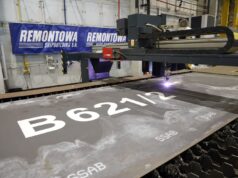
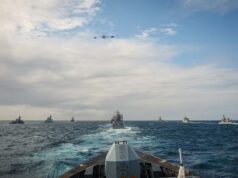


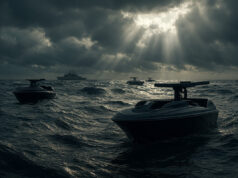
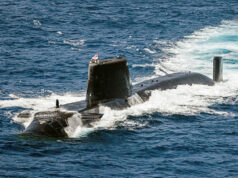

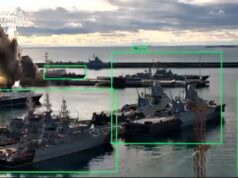
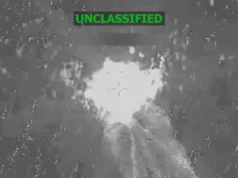


The Saudi version of these ships looks like the way to go. Meanwhile also in the US:
The Navy Now Wants To Retire The First Four Of Its Troublesome Littoral Combat Ships
It was something many of us saw as a near-certain eventuality, the Navy has formally announced that it wants to retire its first four Littoral Combat Ships. Split evenly across both the Freedom and Independence classes of the failed Littoral Combat Ship concept, the oldest of the vessels was commissioned just 12 years ago, the youngest a mere six years ago. Yes, you read that right—six years ago! The troublesome fleet within a fleet has been serving as a training and test force, a dubious role from the start that the Navy says isn’t even needed anymore. Giving up on the vessels as front line ships began a few years ago as part of a restructuring plan that was initiated as the program became increasingly mired in technological and logistical turmoil.
Apologies I forgot to add the link:
https://www.thedrive.com/the-war-zone/32148/the-navy-now-wants-to-retire-the-first-four-of-its-troublesome-littoral-combat-ships
The first four LCS are being retired because it is not cost effective to upgrade them (given the current, dismal funding for the navy in general.) Retiring the first four will allow for significant upgrades to the others. You might say this was ‘predicted” but that is just not the case. Ignore the US blogosphere of retired old guys who think they know, but are clueless and don’t.
In some respects the T31 has a similar design brief to the LCS, minus the speed. A cheaper, lower manned vessel for filling the general purpose role, flying the flag, anti-piracy etc. As an OPV or coastguard vessel the LCS would surely be ideal. A 57mm gun for warning shots, a large helipad and hangar, SEARAM if someone tries lobbing a missile at you. I guess the two ship designs just weren’t fighty enough. I know there have been some serious issues with the power integration and cracking of the aluminium hulls. I am just surprised that the US Navy are binning the ships after so little time!
The first four were re-designated as test ships in 2016, and there’s been significant changes between them and later hulls, and the Navy has decided that they aren’t worth it.
As to the LCS being an OPV or Coastguard ship, given their costs and the fuel usage I can’t see the logic of that at all.
Agreed. To me they feel neither fish nor fowl.
T31 / Iver Huitfeldt (type of vessel) is exactly the ship the USN needed. How so many bought in to the speed in the DoN / USN I don’t know.
Actually Absalon would be ideal for them too.
So a family of diesel ships using a common large hull.
Actually the T31 / Iver Huitfeldt might also be the ideal fit for the FFG(X) spec. It will be interesting to see if HII stick with an upgraded Coast Guard cutter or have been quietly working on something else. They have been very secretive about their platform for this program and the Danes were certainly pushing the IH platform for this program in the past.
I don’t think T31 is sophisticated enough for FFG(X). It is a FREMM or T26 type vessel fits the brief better.
With T31 the US could have loaded it up with missiles, perhaps 5in mount at A and B, reconfigured the hangar with double doors like Abaslon to help manoeuvring of helicopters. Something they could push close to the shore. Yet something with the range and seakeeping to keep up with CBG’s and ARG’s if needed. Add some Absalons into the mix and they have a working littoral system.
Both of those ships were delivered to the Danish Navy in an incomplete condition that hides their actual, more expensive price tag. Absalon is totally NOT fit for USN service.
Somewhat ironically the LCS high speed requirements seem to have been the Achilles heal for this program; I’ve not seen a justification for why high speed was so important versus what it cost in other areas of the platform. It mandated a lightweight build and lightweight weapon fit-out where too much became optional for US operational requirements. Addressing those issues is producing something akin to a very light frigate (in US terms) with what may end up significantly narrowing the gap in cost to that of a much more capable FFG(X) platform. As Trevor has commented neither fish nor fowl.
Its a while back that I read about their failures but if I remember correctly in the articles I read two major problems were highlighted.
Firstly that they were designed to have a modular fit of weapon systems to make them very flexible, powerful and upgradable. Great on paper but as yet not one of those modular designs has yet made it into the ships, leaving them totally under armed as compared to the blue water adversaries they are likely to meet. This becomes important due to point 2.
Secondly the generally off shore role for which they were originally designed has subsequently been shown to become overshadowed by technical developments and strategically through experience since they were conceived that makes them unsuitable for that role, meaning that they would have to perform much more in the blue water role for which the first point shows they are completely unsuitable.
So yes as others have said they fall between a rock and a hard place in terms of their best role. I guess the speed might help them run away from ‘superior opposition’ mind if they see them soon enough. Have to admire Lockheed Martin’s creative spin on it mind. Very inventive. But puts into perspective some of the criticism of UK programmes over the years I guess (not that I am defending them).
Nelson said I think never set a frigate against a fort.
4000 ton of anything has no right messing about just offshore needs to be OTH.
Helicopters, SDV, drones, long range PGM for guns, etc. as you say have made the point moot.
The US Littoral Combat Ships have never resolved one issue, what are they for. They don’t have a gun for the NGS role, they don’t carry enough Marines or helicopters for an assault role, they are to big to take on fast attack boats and their CIC is not big enough to operated as a headquaters or mothership. To me it seems that no one really ever decided what they are for. To build a ship upto 25-28 knots is straight forward, 32knots+ and it will cost a lot of money, which these ships do, but you still cannot run from a missile, so what the point of all that extra speed.
However, I see the same mistake in the T31, the gun. A RN frigate would be expeceted to be used in the NGS role. The RN will have the wierd situation where a billion pound AAW Destroyer might need to go into the NGS role where a £250 million frigate will be of no use. Possiblity it would be better to take the 4.5 inch guns of the T45s and give them to the T31s. I know there old but if we can’t afford the 5inch guns for the T31 then at least give them something that would give flexability in design. What the RN does not need is a future LCS situation, we don’t have the money for it. At least put the plumbing in and the space to drop a 5 inch turret/magazine into the T31.
IMV the gun is one thing they got right for LCS. The new USN FFG(X) frigate will also have a 57mm rather than a 125mm. The FFG(X) is relatively high end with 32x MK41 VLS cells, new state of the art radar and reasonable ASW fit. Its why one of the tenders is FREMM.
I suspect the reason for the lighter gun fit is a recognition that ships operating relatively close inshore are becoming increasingly vulnerable to sophisticated (and not-so-sophisticated) shore based weapons in the hands of much lower tier adversaries, let alone those from Tier 1 adversaries. Along with that, is measuring the risk-reward trade off for what NGS achieves vs risk to the ship, when other solutions exist to support onshore attack (hence USN/USMC experimenting with HIMARS launched from ships for example), also acknowledging that no one is planning on making opposed amphibious landings.
A sign of this recognition is the USMC Commandant’s comments last year questioning the wisdom of continuing to put all the focus on the large LHA and LPD for amphibious operations, versus greater numbers of smaller vessels to distribute the risk, particularly to ships stopped in the water. A loss of one or more of those large vessels takes a lot of men and equipment with it, if hit before disembarkation. Clearly he is considering this to be a risk even with all the air defence capabilities the US possesses.
Even if all the preceding is discounted, then the 4.5″ on the T31 would only have standard range ammunition, putting the ship too close to shore and well within visual range of shore based artillery or even some ATGM, let alone stealth or supersonic cruise missiles. Fitting a 5″ gun is going to cost ~$60M based on the T26 orders and to avoid the same risks when using conventional ammunition we’d need to be firing Excalibur or Vulcano rounds. After we’ve done all that we’ll still only have one gun. And of course the other guy has a say too and may be firing extended range shells back at us along with more sophisticated weapons.
Of course we’d expect or at least hope that our air defences would take care of all these threats, but at the end of the day it still comes down to whether NGS could put enough weight of fire down from a single gun to make enough of a difference to justify the risk. If we’re talking multiple guns and consequently ships, then the size of the engagement calls for something different, which is why we now have carriers.
I’m sure many will disagree though 🙂
Two ‘frigates’ with 5in guns at A and B using precision guided munitions would provide an awful lot of supporting fire to an ARG. You could probably 4 gun systems and a small war’s worth of shells for the cost of an F35b and do most of what an F35b in providing close support.
Sometimes I wonder for close support and littoral combat if a modern version of the old County class would be good, 4 4.5 inch or 5 inch twin turrets, Sea Ceptor instead of Sea Slug, Phalanx instead of Sea Cat a couple of 30mm with LMMs a few mini guns and a Wild Cat or Merlin. Yes the old County class would be 500 tons heavier than a T31 Arrowhead, also 20m longer, but just imagine the moral of Marines going ashore when they would know that they could get the support of two or three T31s with 4 4.5-5 inch QF guns raining down hell. At the same time two twin turrets of 4.5 inch or 5 inch with a depression of -5 what would they do to swarming boats.
Would there be space for an anti ship missile, I would think so, remember the engine layout for the Countys were the problem but with modern machinery above space could be saved.
The Countys in my personal opinion were probably the best all round destroyer design of the RN, yes I know the issues of the Sea Slug, but it was a first generation missile. What some people don’t always understand is for ground troops going ashore aircraft overhead is good, but to call up a ship that can bring down hell is better. It was one of the reasons that the USMC loved HMS Belfast so much in Korea, she not only brought down hell she created it. She did not earn compliments from an American Admiral for nothing.
So sometimes you need to go back in history, not everything that is new and shiny is not always the best, sometimes you need to go old school.
Better yet, reactivate HMS Belfast, replace some of the 4 inch with Sea Ceptor and a Anti Ship Missile and see what she does, 9 6 inch QF, …….only joking. Joking aside how well would a two inch armoured plate with a 10 inch internal plate hold up against a modern missile?
Hi Ron, you seem to be suggesting NGS as a requirement to support troops making an opposed landing. The issue is that we don’t have to storm beaches today, we have more options than in the past. We can use helicopters, or in the USMC case tilt rotor, to leap frog the beach and basically land troops where opposition is light or non-existent, using modern surveillance to help ensure that, along with aerial over-match using rotary and fixed wing assets to suppress opposing troops and hold off opposing air power. A beach landing, opposed by ground troops, just isn’t going to happen, its far too expensive and wasteful in losses of skilled and trained troops.
Glass Half Full, In some ways I agree with you, we do have many possibilities today. Heres the issue, did anyone expect to put a few thousand troops ashore in the Falklands in 1982. How often were the destroyers and frigates called to the gun line for support.
Yes I agree that over the past few decades this type of support has not been needed, yet in 1991 the 16 inch guns of the US Battlewaggons proved to be very useful.
The concept of a Littoral combat ship is to fight in the brown green waters, to be able to react and quickly and if need be bring down suppression fire at long range. That is where the large caliber gun comes in useful, the old MkVs in there twin turrets County class config would bring down 96 shells per minute at 20km. With modern ordnance this range increases to about 50km, if you think about the UK the furthest that you are away from the sea is about 110 km.
So it is something to think about.
Hi Ron. I think we have to be careful on how we extrapolate the Falklands experience, especially into a modern war theater. NGS in the Falklands had value in the absence of adequate UK air assets and only light UK artillery, although the latter was very effective in its own right. NGS also largely enjoyed immunity from land based counter fire, although moved to night ops because the aerial threat was deemed too great a risk.
However, the example of HMS Glamorgan is telling. An Exocet from an Argentine “lashed-up” ground launcher, severely damaged the ship and killed 14 crew; the ship perhaps only avoided being sunk because of good handling that mitigated the impact. The ship was traveling at 20 knots some 18nm off shore at the time. Fast forward to today’s far more sophisticated shore based ASM that have far greater reach and NGS is going to require a very robust air defence. Hence the question of whether the risk is worth the reward.
In any event I doubt I am going to convince anyone to change their minds on this topic, although I do keep trying. If you haven’t read it, there is a 2017 document on the interwebs by Steven Paget titled “Under Fire: The Falklands War and the Revival of Naval Gunfire Support” that aligns with your thoughts, although when I read it I see all the reasons why the specific use and circumstances of NGS in the Falklands don’t translate well for use today and the future. I also disagree with equating the number of rounds fired to effectiveness as the author seems to.
Enjoy the rest of your weekend.
I think the RN fired about 5000 shells during the Falklands. And that was mostly what could be termed suppression and harassing fires. Some accounts said towards the end the Argentine conscripts became bomb happy and either ignore the shelling or cracked. .
As you rightly say there is no storming the beaches in our doctrine. But even in manoeuvre warfare there is need to support not only defence of the AOA but attacks springing from it. If the RM is being tasked toward more maritime based operations then fires from naval guns is probably as good as way as any. There may not be carrier to provide CAS. One or more well delivered 5in shells would be enough in most cases; too much ‘bomb’ resulting in too much damage is why the US developed SDB. It isn’t always about several hundred kilo of HE falling from the sky.
The County is a favourite ship of mine too. As a solid and even innovative design as Leander. We just won’t talk about Sea Slug……….It’s a shame the UK can’t screw together ships that decently today.
Yes. If you want ‘guns’ you need length and space. Probably the only thing the USN got right with the Zumwalt is it form and layout. What worries me about sending a modern blue water escort to the gulf is that not enough arcs are covered by cannon. I think purchasing T31 with 57mm is wrong which is not to say I think that that gun system is bad. They should have just found the money for 5in Or perhaps even more radically moved the Mk8’s from T45 to T31 and replaced it with 57mm. T45 is never going to go near the gun line, we have too few of them and Sea Viper is too valuable. 57mm with Orka or 3P would add another layer to T45’s defence and whatever HVU is being escorted in a way Mk8 or the Phalanx cannot. T31 with 5in using PGM shells would be useful.
I agree, It would be better to remove the Mk8s from the T45s and give them to the T31s and give the T45s the 57mm guns. To put a T45 on the gun line is well stupid.
I suppose a big ship with a big gun looks the part. But beyond the rare ‘constabulary’ jobs’ it will never be used and then only used as a threat. It takes lots of shots from even a 4.5in to stop anything. More shots than would look good in the media anyway! No 57mm is enough. And it would be a lot better for places like the Gulf too. Now the Italian Horizons have 3 76mm guns which is entirely different proposition. They are not just close in weapons but offer a little more with a capability that fits somewhere between CIWS and PDMS. They are conventional guns for ‘constabulary jobs’; 3 guns means most arcs are covered along with small arms and cannon for places like the Gulf, plus IR sensing means they can be used against ships more effectively targeting the uptakes for example. They also can provide limited NGS too. 40 years after the Falklands nearly the Continentals are still putting decent guns on their ships and we still aren’t even though it was one of the lessons of that war.
The USN cannot deploy LCS for any meaningful time. The maintenance schedule for the vessels is such that supportability is a logistical nightmare.
The original T23 concept was similar… Park it alongside and let someone else do the work not the crew who can stand down and do courses and take leave.
The RN quickly learnt the folly of that idea (although something similar, CLS on T 45 was a similar cluster! )
Currently the USN have an LCS deployed in the Caribbean doing MSP and anti drug patrols. That’s it. They where supposed to have a handful of them deployed into the Gulf region a couple of years ago but that time line keeps moving right with knock on effects regarding the units the LCS ships where supposed to take over from.
The USN is not looking good with regards to getting vessels into service that actually have a meaningful task. Zumwalt, LCS, Ford have all been less than satisfactory. DDG 51 has been OK but its an old legacy design now that has reached the end of its life even with the Flight 3 vessels.
The USN would be better served going for the T26 as a replacement for the Burke Class and the FFG X.
This would enable them to get scale and cost right, and for the other 5 eyes nations would be a great standardisation.
Boris really should be picking the phone up to Mr Trump and doing a deal.
T26 offers nothing over Burke. The latter might be an old design. But it is the design that influenced all large Western escorts that came after it.